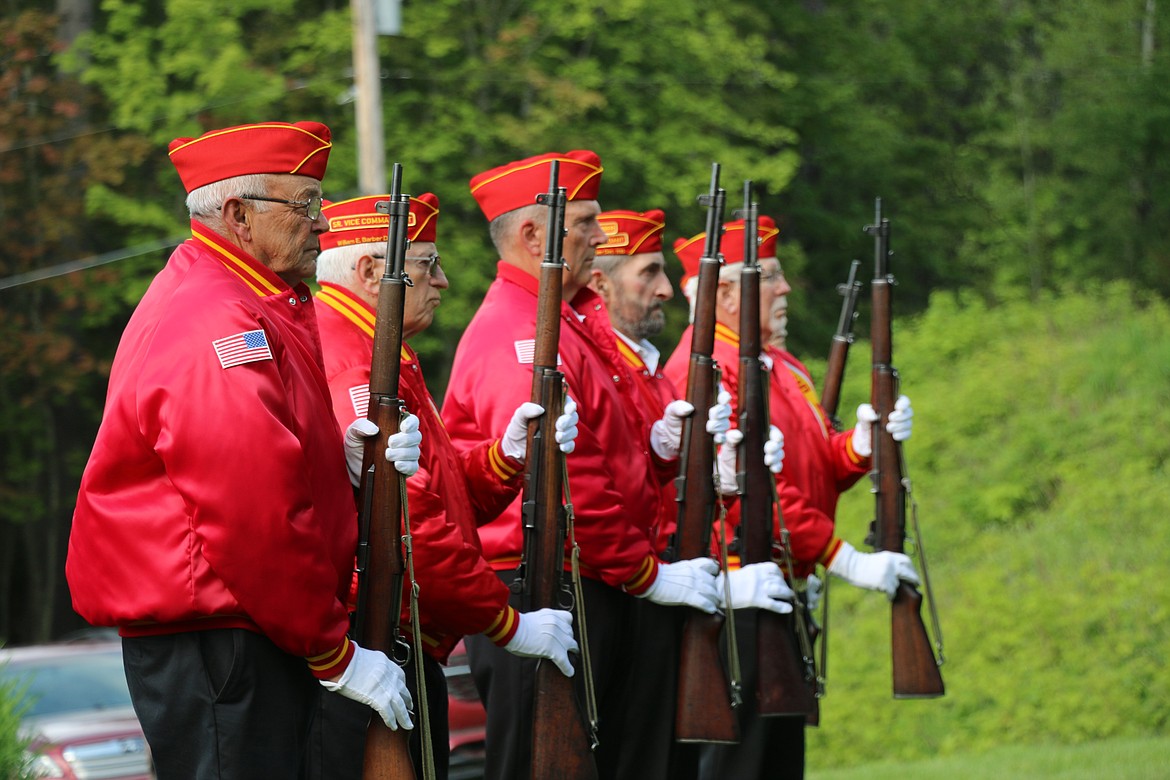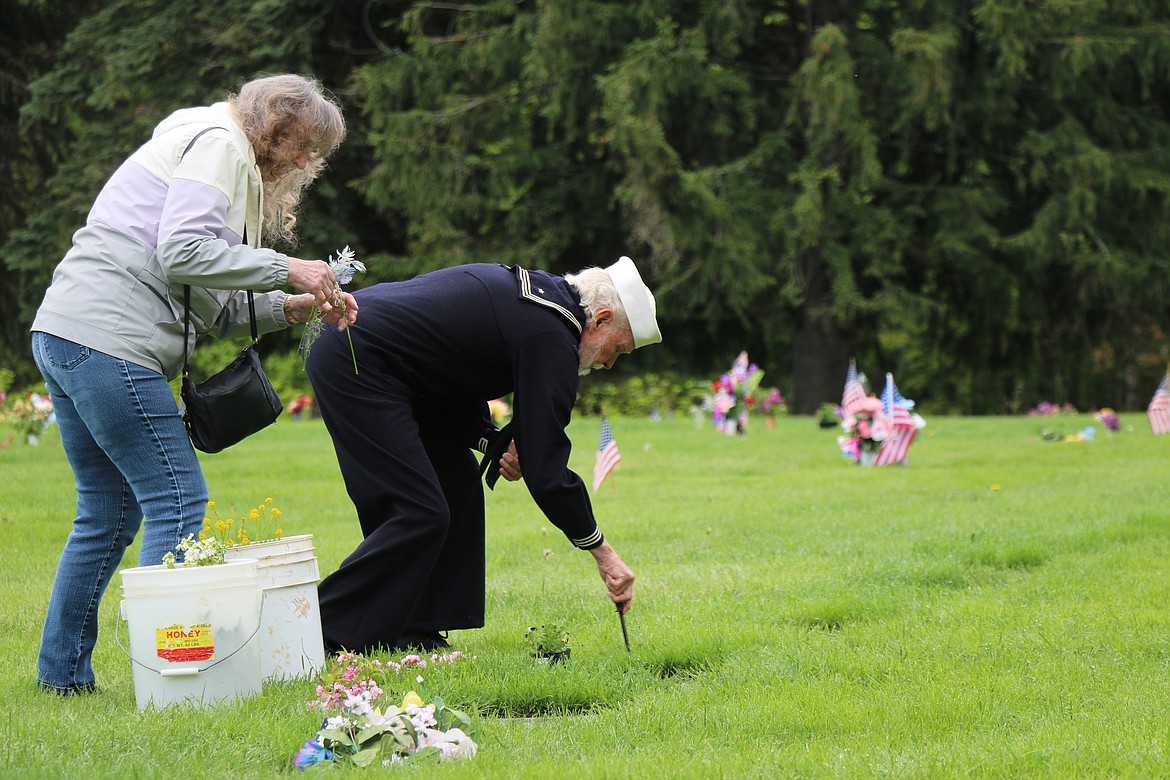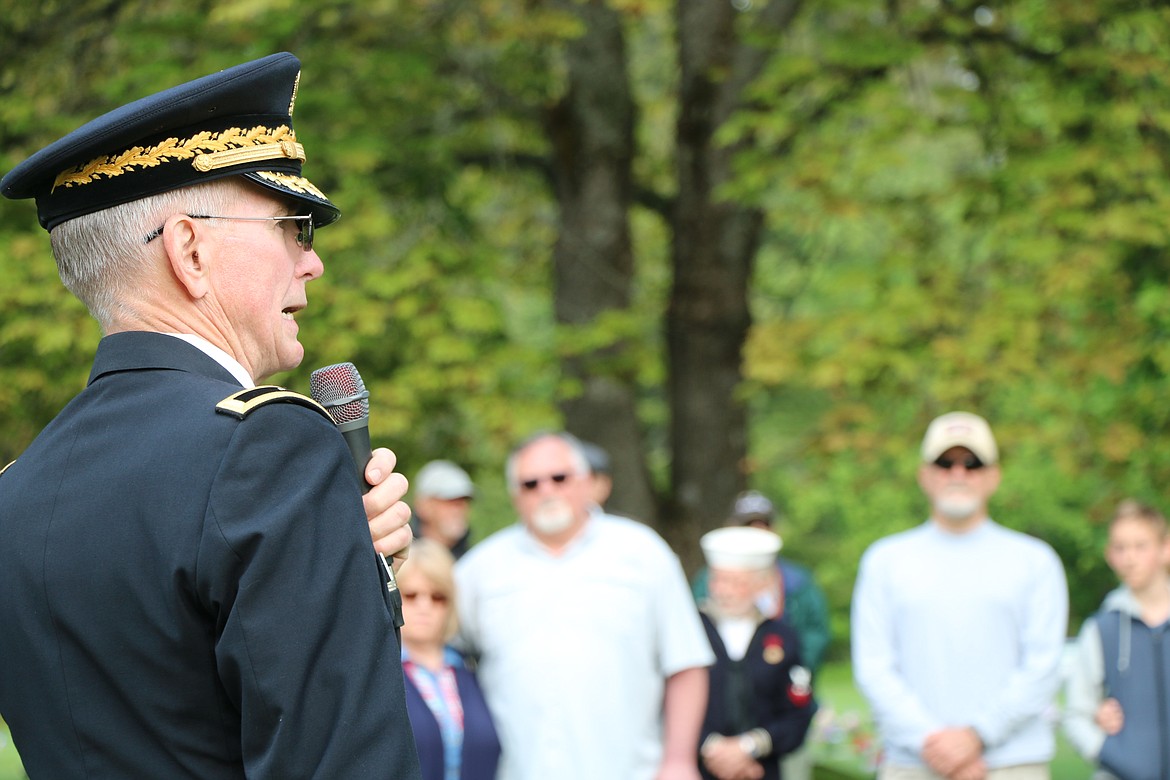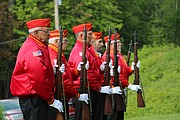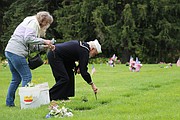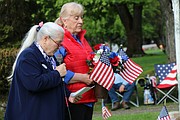Community honors the fallen on Memorial Day
▶️ Listen to this article now.
There was a time when the United States had no national anthem.
When a hometown lawyer and amateur poet was detained on a British warship as the battle raged for Fort McHenry.
That lawyer, Francis Scott Key, would scribble the first stanza of the poem, "In Defense of Fort McHenry", as he watched the battle from the harbor, a prisoner of the British.
Ironically, the music to which the poem would become tied was a popular British drinking song, "To Anacreon in Heaven".
That tune would become a popular song during the Civil War, motivating the soldiers to defend their country, Bryan Hult, a retired U.S. Army brigadier general and Bonner County Veterans Services officer, told those gathered for Memorial Day services at Pinecrest and Lakeview cemeteries on Monday.
"What would motivate them to go to lay down their lives," he asked those gathered. "Part of what motivates you to come to remember today. Maybe it's the burning desire of freedom in their heart, they would say yes, I will go. Maybe it's the glory that they thought they would experience in wartime. Maybe it's the same as their family saying you need to go, maybe is the fear. And many of them experienced fear as they approach the battle."
And, Hult said, another thing that motivated those fighting was a tune — "The Star-Spangled Banner".
It was in the summer of 1865, that druggist Henry C. Welles in Waterloo, New York, wanted to remember those who died during the war. While the idea didn't gain any momentum then, the following April, Welles mentioned the idea to others, including General John B. Murray. It wouldn't be long, Hult told the crowd, before the community would create wreaths and crosses and gather bouquets to decorate the graves of all who had fallen.
The graves were again decorated the following year and, by 1868, General John Logan proclaimed that Decoration Day would be held on May 30.
Fourteen years later, the name was changed from Decoration Day to Memorial Day, and those lost in all wars would be remembered.
"We don't remember it as the first day of summer celebration, we remember it as those who died to continue the freedom that we have," Hult said.
What motivates those who fight in defense of their country, Hult asked, before continuing. For some, it is the "burning desire of freedom in their hearts," while for others it is the glory they believe they will experience in battle. For others, it was the feelings engendered by a tune that began as a poem written on the deck of a warship.
It wouldn't be until 1929 — Nov. 3, to be precise — that anyone really called attention to the fact that the United States did not have a national anthem, Hult told the crowd. Robert Ripley of "Ripley's Believe It or Not" put that little-known fact into the panel of one of his syndicated cartoon.
"And so there were 5 million letters written to Congress, in a nation that had 30 million people. That would be like 50 million letters being written to Congress today," Hult said.
In 1931, Congress acted and "The Star Spangled Banner" was adopted as the country's national anthem.
"A song that we hide in our hearts, that we stand at attention to, we do not kneel before that star spangled banner, we kneel before the cross," Hult said. "We enjoy 'The Star Spangled Banner', and that burns in our hearts for the freedoms that we enjoy today. And so we come together today to remember those men and women. rich and poor, white and black, brown, red and yellow. From the North and from the South, from the East and from the West. We are one nation under God, indivisible, with liberty and justice for all. So we remember those who are laid to rest for the freedoms that we enjoy."


